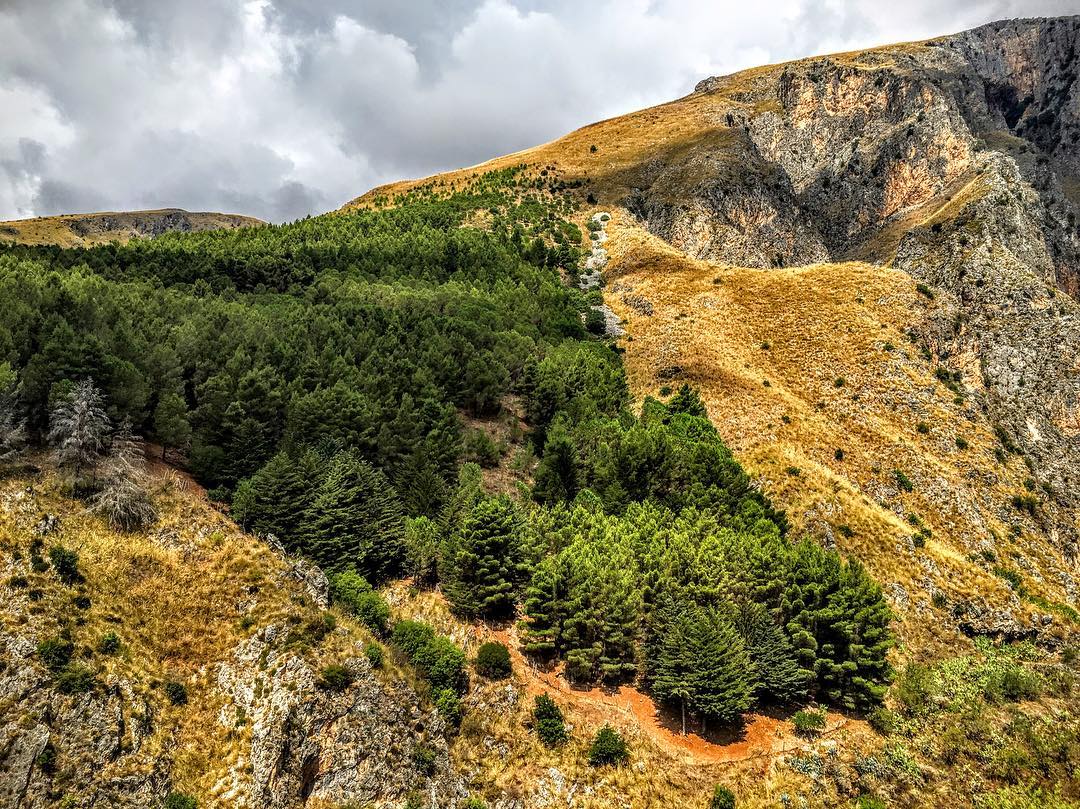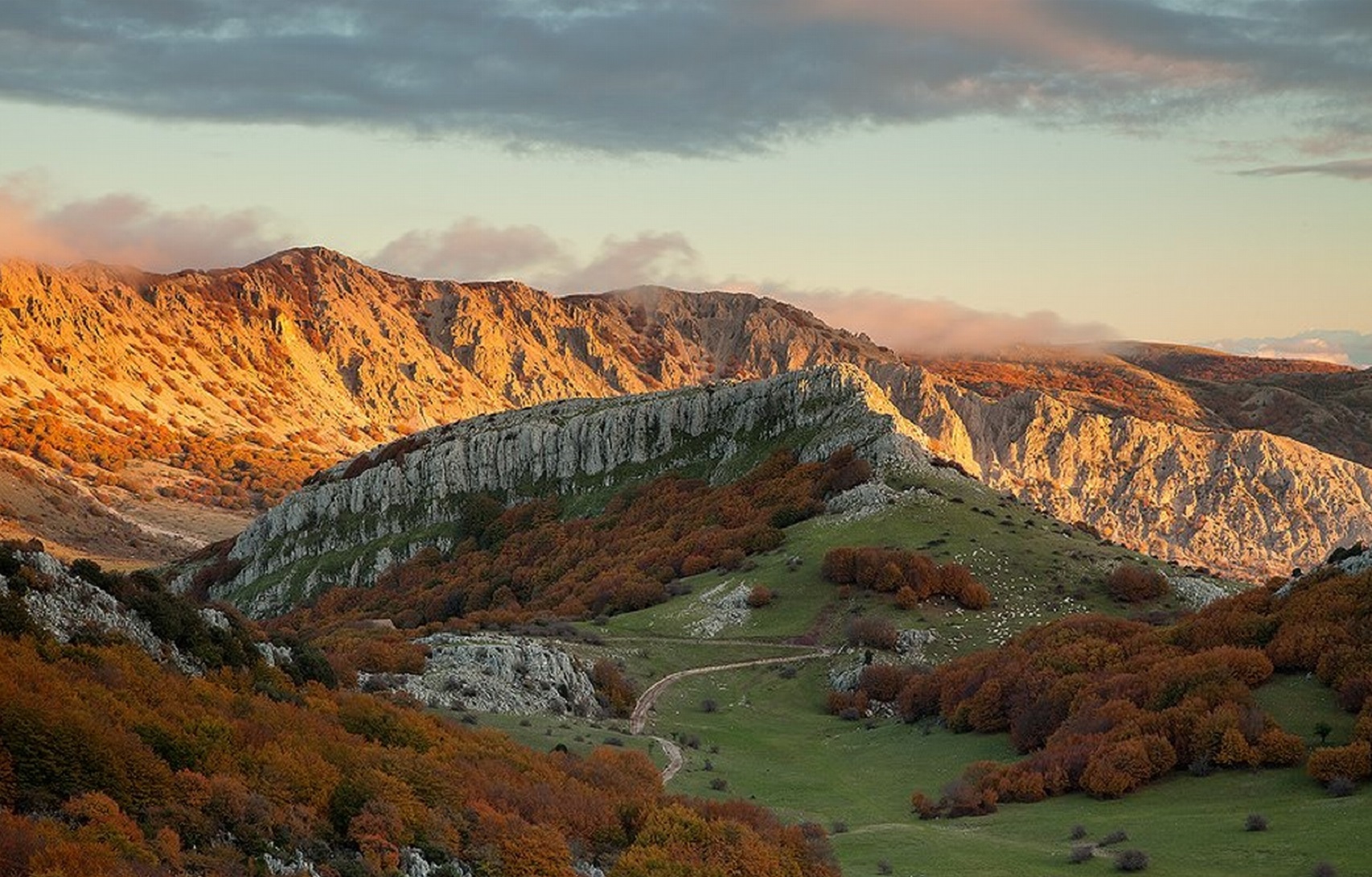
They were
journeying upon that old, ancient road which runs into the interior from the
coastal Cefalu towards the Madonie villages of Petralie, then eastward to the
old Sicel villages of Agyrion and Centorbi, and down to Greek Naxos and the
sea. Here, at the edge of the woods, there are three old paths used by pilgrims
coming from the east - Petralia, Calcarelli and Polizzi, or from the south –
Blufi, the Sancturio of the Madonna
of the Oils, and Castrugiuvanni,
or from the west - Monte Alto, where an antique Marian Sanctuary, one of
the highest in Sicily, houses a small statue of the Madonna dell’Alto. Often
revered by pilgrims, there is an old ritual of pre-Christian origin “a pigghiata da petra”: whoever goes up
to the shrine for the first time should bend down with the hands backwards and
pick up a small stone from the ground and hold it tight on the lips until
he/she reaches the Sanctuary which houses the shrine. Once there he/she would
dip it in the blessed water; the small stone will become then a powerful amulet.

They now
passed from M.S. Salvatore, a Norman encampment, to Mele in the forested hills,
the holy Del ‘Onferno ran that ancient highway, and on from Contra Brancato to
the narrow blue tipped white granite cliffs just below the ancient salt
villages of Petralie, that sat above the streams of the Imera and Salso. Along
this track as far back as history can trace, the metals, obsidian, volcanic hematite,
corundum and apatite of the west have been traversed and passed by pack-mule or
by foot; goods born to the northern coast towards Palermo, sent in exchange for
trade with Italy’s eastern coast, and beyond. Older than the Christian faith
and older than the Romans, is this old path. South and east are the mountains
of the Nebrodi and Madonie, the deep canyons, up thrusted pink-tinged limestone
crests and wooded vertical basins, with clear cold streams mark the ancient
way. The Pilgrim's Way, it still is called; but the pilgrims were now the last
who walked it, for it was already of an age lost in time, and now it is shared
by merchants and soldiers as well as those who seek the bliss of the silent
island interior.

With
Pizzo Carbonara dominating the skyline, the travelers followed the long forestry
footpath which dipped and curved and rose among the beechwood and lichen-laden
maples, its course marked even in the hollows by the line of the old holm oaks which
flanked it. Most pilgrims had never wandered far from their own country, and
now they ascended with light hearts and eager, open eyes taking note of all the
varied terrain, from the limestone bluffs to green plateaus of nature, which
passed before them. To their left was a hilly country, a land of rolling cork
oak woods, the Bosco di Guarneri, broken here and there into open old stony
mule track, around the occasional shepherd’s hut where freshly made ricotta
cheese was always a treat. Monte Grotto Grande, Lancenia, Monte Macabubbo, and
Gratteri swelled and sank, each merging into the other. But on the right, after
passing the village of Sant’Ambrogio and the old vineyard of Abby Santa Anastasia,
the trail opened into a wide dirt track as the whole south country was revealed
like a map at their feet. There were grapes, wheat and olive trees on the
country lane, tended by the Benedictine monks. An unbroken orchard of wild pear
trees, stretching away to the blue marble of Monti Iblei, ringed in pale olive-green
against the deep azure sky. Here, under a great canopy of ash trees, strange people
were rumored to dwell, and villainous deeds were done. In its dark recesses
were wild men, little changed from their nefarious ancestors, who danced round
the ruined chapel of San Calogero, and well warned was the peaceful traveler
that he should not tread into the Bocca Nuova but stay upon the lighted open
road of the white-pink limestone gravel and pay heed not to wander into so
dangerous a tract, where sharp thorn, briar-brush tangled forest, and wicked
men all barred his safe progress.

But
apart from the rolling country upon the left and the great forest-hidden plateau
upon the right, there was much upon the road itself to engage the attention of
the wayfarers. It was dotted with occasional people. As far as their eyes could
carry they would anticipate seeing travelers. sometimes single, sometimes
several abreast, sometimes in moving crowds, where a crowd of pilgrims held
together for mutual protection, or a nobleman showed his greatness by the
number of peasants who trailed at his heels. Alike only in the fact that the
road’s dust and chalky clay covered them from their hair to their shoes.
There
were friars and monks journeying from one sanctuario
to another, Benedictines with their black robes looped up to show their white gowns,
Franciscans in white, and Jesuits in brown. Friars also -- Dominicans in black,
Carmelites in white and Capuchins in gray and the occasional Scalzetti in wine-red. There was animosity
between the cloistered monks and the free friars, each looking on the other as
a rival who took from him the oblations of the faithful; so, they passed on the
high road, with eyes askance and angry faces.

Then
besides the men of the church there were the men of trade, the merchant in tunics
of rough sewn wool, and weathered cap, riding at the head of his line of pack-mules.
He carried bars of Levant tin, Arabian wool, or perfumes and waxes from Muslim
shores if he traded eastward, or if he trudged westward then he carried with
him the woven fabrics of Genoa, the coins of Venice, the bronze weapons of
France, or the iron, ceramics, and amber of Italy and Spain. Pilgrims were
everywhere, poor people for the most part, plodding wearily along with trailing
feet and bowed heads, thick staffs in their hands and bundles over their
shoulders.
Besides
all these, one could see many strange travelers drifting along the road: troubadours
who wandered from fair to fair, peasants and homeless wanderers; day workers,
students, beggars, shepherds, goat tenders, free workmen in search of better
wages, and contadini who would
welcome any wages at all. Sullen and mostly silent, yet with one standard
answer to “How do you do?” is “Cuntrastamu”
which means “We are resisting” or “We are struggling” Such was the throng
which set the old road smoking in a haze of white dust from Cefalu to Catania.

But always
among the wayfarers were the protectors, the campiere. Several times one passed
a cosca or clan of these sullen armed
men. These field guards had a reputation for toughness, which were advertised
by their arrogant stares and ready arms. Some were veterans from the Levant,
who had received their discharge but most trace their heritage to the Malta
Knights. Their ways, how they dressed, squinted and moved around, symbolized
that they were uomo di fiduca or men
of confidence. The spoke little but in phrases, gestures and signs, known
little by anyone outside of their ken.
Now at
the Ponte San Brancato and later at the ancient Roman bridge in Blufi, the
campiere of the Marchese Pottino in the district of Malpasso stood guard
looking for brigands among the travelers. Travelers were asked for a tribute
called pizzu or cuccia and could consist of a tumoli
of wheat or similar exchange.

This was the ancient road, The Pilgrim’s Way.